#al-Qazwini
Text
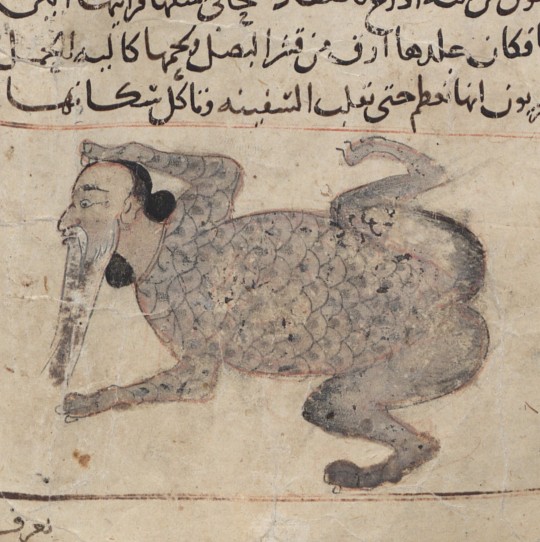
human-frog creature
in the oldest known manuscript of zakariyya' al-qazwini's "aja'ib al-makhluqat" ("the wonders of creatures and the marvels of creation"), wasit (iraq), c. 1280
source: Munich, BSB, Cod.arab. 464, fol. 69v
#13th century#hybrids#zakariyya' al-qazwini#al-qazwini#aja'ib al-makhluqat#the wonders of creatures and the marvels of creation#bestiary#medieval art#frogs
338 notes
·
View notes
Text

Abu Yahya Zakariya ibn Muhammad ibn Mahmud-al-Qazwini (ca. 1203-1283 CE), is known simply as al-Qazwini, Kitab Aja'ib al-makhluqat wa Gharaib al-Mawjudat, literally “The Wonders of Creation,” compiled in the middle 1200s in what is now Iran or Iraq.
181 notes
·
View notes
Text
Happy #InternationalCheetahDay!
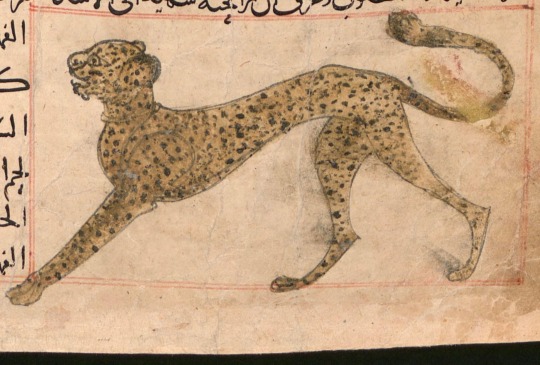
Here is the cheetah in Zakariya al-Qazwini's 'Aja'ib al-Makhluqat wa Ghara'ib al-Mawjudat (The Wonders of Creatures and the Marvels of Creation), an important work of Islamic cosmography which was probably first written in the 1260s, and for centuries after was reproduced across the Islamic world. This illuminated manuscript copy was made in Wasit, Iraq in 1280 CE and is the earliest known surviving version.
#animals in art#animal holiday#cheetah#feline#wild cat#Islamic art#Wonders of Creation#illuminated manuscript#illustration#natural history art#al-Qazwini#Manuscript Monday#International Cheetah Day
346 notes
·
View notes
Note
hello can i have some unicorns :)
Oooh, of course you can! Let me quickly look up some of my favorite sources...

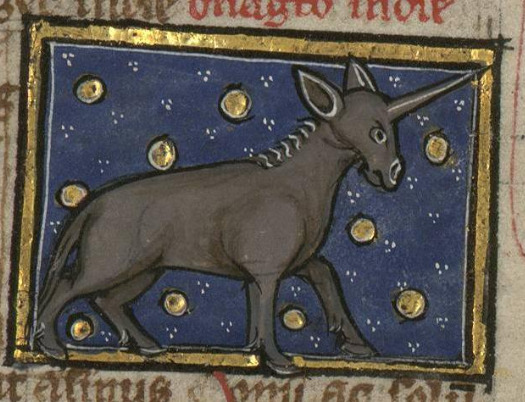

Thomas de Cantimpré has no less than 3 unicorns covered! That's 3 times the amount of unicorns! From top to bottom, you have the monoceros, the Indian onager, and the unicorn itself.
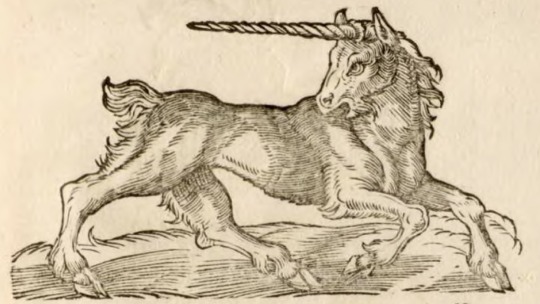
Albertus Magnus gives us this classic animal, looking somewhat heraldic.

This unicorn from the Ortus Sanitatis, though, is rather contemplative looking. And seems rather goaty too.

The rhinoceros (karkadan) from Middle Eastern manuscripts varies a lot, sometimes clearly a rhino and sometimes more fanciful. This version is from a copy of al-Qazwini.
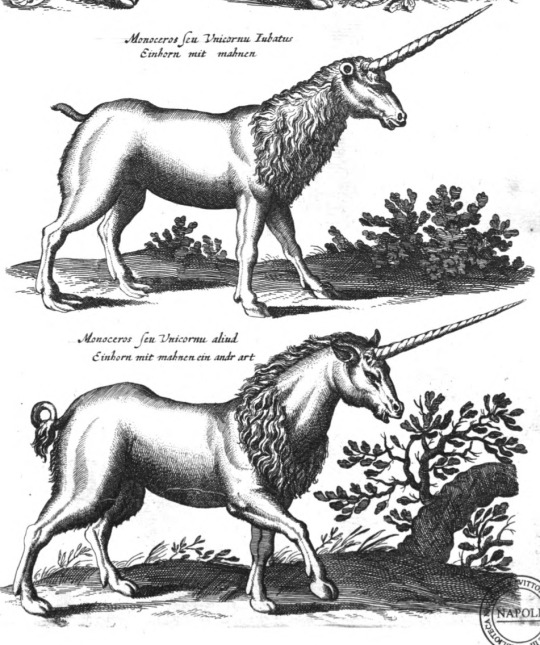
Jonston covers around 9 different unicorns, some of which are horny in more ways than one! (Trust me. Look them up, I've posted them before). These ones look like standard maned unicorns.

Ambroise Paré had a lot to say about unicorns (and mummies, and the plague, and anything else vaguely related to public health). Here is the pirassoipi, a two-horned unicorn (a bicorn?) from Italy

And you know what? I've been sticking to vintage illustrations but here's Rudolf Freund's spectacular historically-accurate unicorn!
Stay tuned for more unicorn imagery!
#unicorns#monoceros#indian onager#bestiary#ambroise paré#thomas de cantimpré#john johnston#albertus magnus#ortus sanitatis#al-qazwini#karkadan#karkadann
358 notes
·
View notes
Note
Thought you might like this, there is a connection between Chinese and Persian dragons in art. The "London Qazvini manuscript" as it's called has illustrations that are heavily influenced by Chinese art, the dragon's pose, head, bodily flames, and flaming pearl are almost identical to Chinese depictions. It was also said to start life as a snake, only to be thrown into the sea (by God) because it grows too big for land. Just thought it was interesting seeing as Chinese and Korean dragons either start as fish or snakes too.
You are right, Chinese influence on Persian (and through contact Arab, Turkish and Mughal, afaik) depictions is well attested after the Mongol conquest. Probably even earlier through the Seljuks.

I love how much the world was connected,one could say globalized, even in the middle ages and antiquity.
2 notes
·
View notes
Text

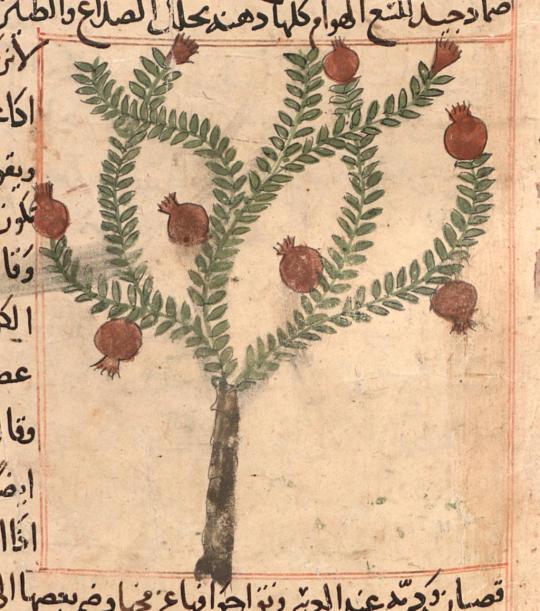

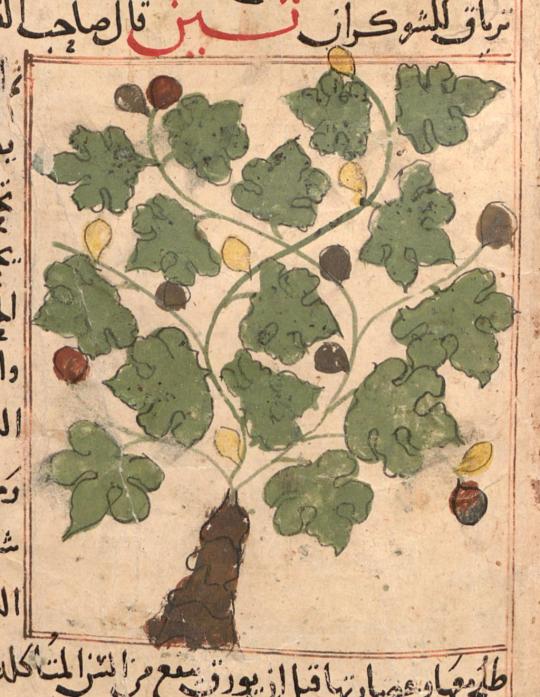
Fruit trees: etrog, pomegranate, mulberry, fig.
Zakarīyā Ibn Muḥammad al-Qazwīnī (1203–1283?), The Wonders of Creation (published Wasit, Iraq, 1280)
Library of Congress
315 notes
·
View notes
Text

from 'Al-Qazwini (d. 1283), Marvels of things created and miraculous aspects of things existing.
Representations of birds in this text are in a style similar to traditional Greek drawings of animals.
Manuscript P 2, f. 185
89 notes
·
View notes
Text
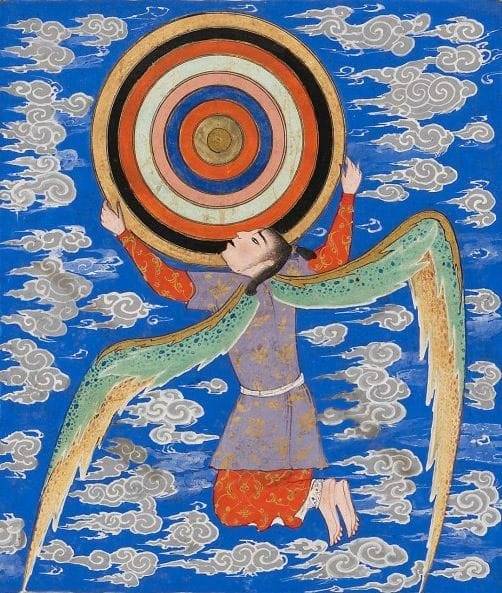
The Angel Ruh holding the celestial spheres, from ʿAjāʾib al-makhlūqāt (Wonders of Creation) of Qazwini, Iran, ca. 1550. Ink, opaque watercolor and gold on paper.
Ashmolean Museum, Oxford
“In Islamic cosmology, angels play a central role as divine agents. As attested by popular medieval cosmographical treatises such as the ʿAjāʾib al-makhlūqāt [Wonders of Creation] of Qazwini (ca. 1203–83), the world of angels (ʿālam-i malakūt) was believed to be closer to the world of absolute truth-reality (ʿālam-i hāhūt or ḥaqīqat) than our material realm. As Chittick explains, “the imaginal world is more real than the corporeal world, since it is situated closer to the World of Light, though it is less real than the spiritual and luminous realm of the angels”. Rooted in Quranic and hadith literature, and popularized in the medieval world by Ibn Sina, Muslim angelology saw each created world in the cosmic hierarchy as governed by a specific angel. According to this system, it is the angels who activate God’s power, qudrat, in the cosmos and maintain its balance and harmony. In both the microcosm of the inner human being and the macrocosm of the outer world, angelic perfection is reflected through their outer beauty as well.”
#Angels#ʿAjāʾib al-makhlūqāt (Wonders of Creation) of Qazwini#The Cosmic Hierarchy#Islamic cosmology#The world of angels (ʿālam-i malakūt)
3 notes
·
View notes
Text
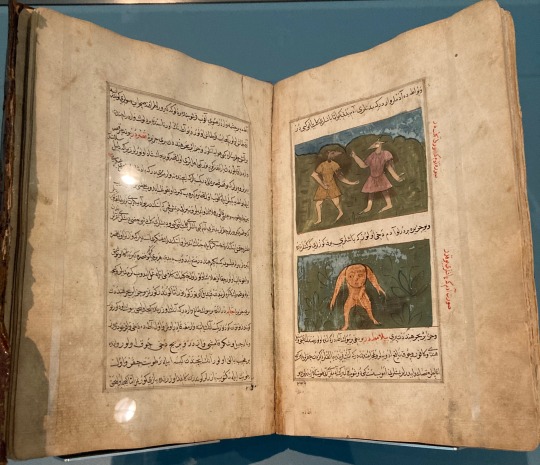


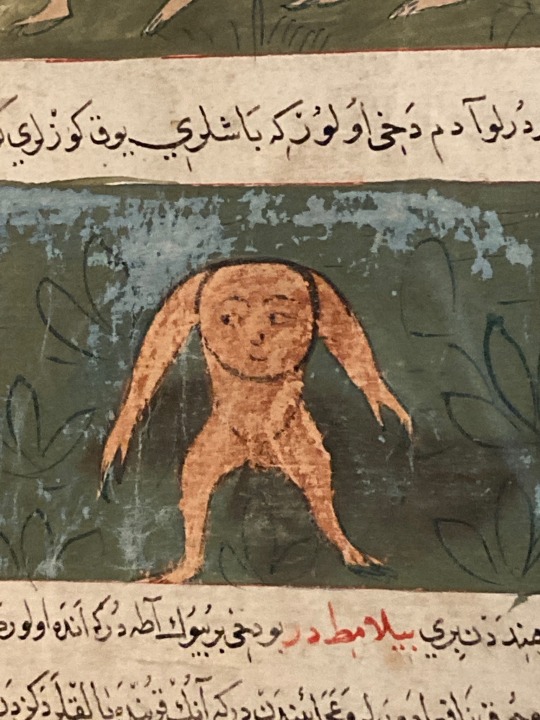

A Man With His Head In His Chest From The Islands In the Indian Ocean
Zakariya ibn Muhammad al-Qazwini, Book Of Wonders And Oddities
Istanbul, 1553
Reinventing the Américas: Construct. Erase. Repeat
#a man with his head in his chest from the islands in the indian ocean#zakariya ibn muhammad al-qazwini#book of wonders and oddities#16th century books#16th century illustrations#reinventing the americas. construct. erase. repeat.#getty center#los angeles
3 notes
·
View notes
Text

“The Epoch of Reionization” Abu Yahya Zakariya’ ibn Muhammad al-Qazwini, 13th century
#Abu Yahya Zakariya’ ibn Muhammad al-Qazwini#art#traditional art#historical art#history#tradition#India#Islam#astrophysics#cosmology#space#cosmos#futurism#archeofuturism#archeo-futurism#floral#mosaic#ai generated#dalle#midjourney#artificial intelligence#script#Muslim#art prompt#generative art#prompt artist
5 notes
·
View notes
Note
Does Islam have versions of Leviathan and/or Behemoth?
They do appear in later cosmographies by Al-Qazwini, but there are no primary sources in Islamic traditions that make any mentions of them, so they are a later invention.
4K notes
·
View notes
Text

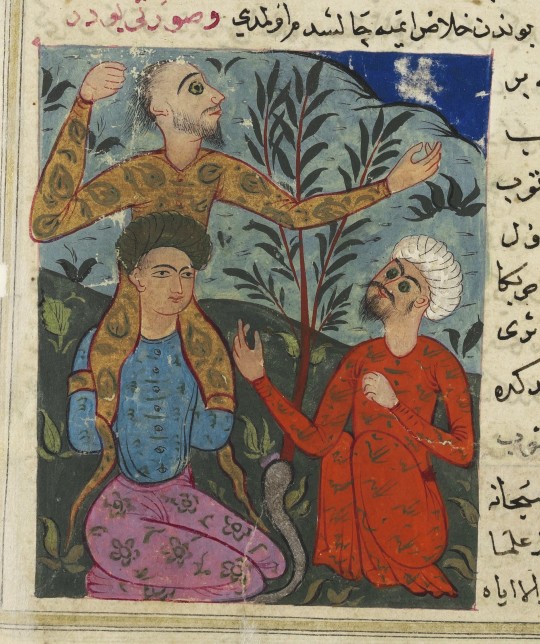
the inhabitants of saksar island
in a turkish edition of zakariyya' al-qazwini's "aja'ib al-makhluqat" ("the wonders of creatures and the marvels of creation"), anatolia or persia, 1717
source: Hamburg, Staats- und Universitätsbibl., Cod. orient. 342, fol. 83v
#18th century#zakariyya' al-qazwini#al-qazwini#aja'ib al-makhluqat#the wonders of creatures and the marvels of creation#hybrids#himantopodes#saksar island#illuminated manuscript
127 notes
·
View notes
Photo

Raghib Al-Isfehani ( Abul-Qasim al-Hussein bin Mufaddal bin Muhammad)
from ʻAjāʼib al-makhlūqāt wa-gharāʼib al-mawjūdāt (The wonders of creation, or literally, Marvels of things created and miraculous aspects of things existing) by Zakriya ibn Muhammad al-Qazwini (circa 1203-83) is among the best known texts of the Islamic world. It is often referred to as "The Cosmography."
The work begins with an introduction, and is followed by two sections, the first on supra-terrestrial, the second on terrestrial creatures. Al-Qazwini concludes his work with a section on monsters and angels. The genre of Aja'ib al-makhluqat (The wonders of creation), of which al-Qazwini's work is the most famous example, includes texts in Arabic and Persian that describe the marvels of the heavens and the earth. Numerous manuscripts of al-Qazwini's work have survived, as have several Persian and Turkish translations of illustrations.
#Abul-Qasim al-Hussein bin Mufaddal bin Muhammad#Raghib Al-Isfehani#the wonders of creation#fish#islamic art#arabic#al-Qazwini
1K notes
·
View notes
Text
One more for #WorldGiraffeDay:

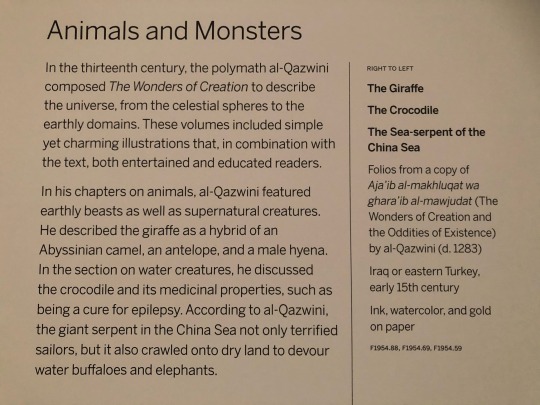
The Giraffe, folio from Aja'ib al-makhluqat wa ghara'ib al-mawjudat (aka The Wonders of Creation) by al-Qazwini (d. 1283), Iraq or eastern Turkey, early 15th c., F1954.88. Ink, watercolor, gold on paper.
Seen at the Smithsonian National Museum of Asian Art in 2020 (they have a rotating display of pages).
“…he described the giraffe as a hybrid of an Abyssinian camel, an antelope, and a male hyena.”
#animals in art#Word Giraffe Day#giraffe#Islamic art#miniature art#illuminated manuscript#medieval art#Near Eastern art#Middle Eastern art#book art#book illustration#animal holiday#World Giraffe Day#museum visit#Smithsonian National Museum of Asian Art#The Wonders of Creation#al Qazwini
36 notes
·
View notes
Text

@maniculum whoa check out this scorpion from al-Qazwini’s Wonders of Creatures!
139 notes
·
View notes
Text

Final Scorpion Sunday! From here on out scorpion ratings will appear sporadically based on what shows up in my inbox. (I do have one or two already there; I'll get to them.)
Anyway, this one is from the Bestiary of Ann Walsh, which is so called because several pages have the name "Ann Walsh" written on them. I'd describe it for you, but in fact the fellow who runs the Medieval Bestiary website has a detailed write-up here that I can just direct you to if you're curious.
So I guess all that's left to do is hand out points. Bit of a damp squib of an ending, but I didn't plan this out ahead of time.
Small Scuttling Beaſtie? scale unclear, ½
Pincers? ✘
Exoskeleton or Shell? ✘
Visible Stinger? ✘
Limbs? 4
As for vibes, lizards are fine. I like a good lizard. This one looks very grumpy, which is charming. 4/5, good lizard.
However, lizards are also A Thing that is Not A Scorpion, so it loses one of those points for being identifiable as a non-scorpion animal. -1. You may think, "hey, 'lizard' is a pretty broad category, does that really count as identifiable?" To which I would say, "turtle" is also a pretty broad category and I docked a point from that one.
So that leaves us with:
3.9 / 10
The lizard would like us to leave it alone.
Bonus!
Since this is our last Scorpion Sunday, I think it's a good opportunity to review our high scorers, under the cut here.
Top Three
#3: the Real Scorpion from al-Qazwini’s Wonders of Creatures, who received an 8/10 for hitting all the requirements; its imperfect score is due to a plain 3 in Vibes for being no more or less appealing than a regular scorpion. (Submitted by @a-book-of-creatures; link to post here.)
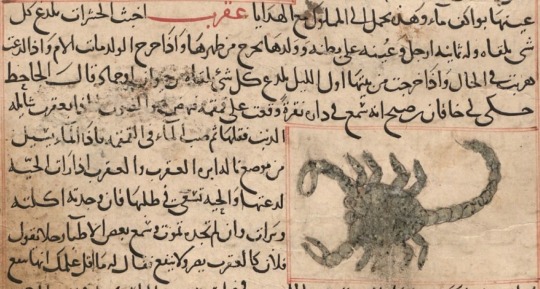
#2: this scorpion from Peter Lombard’s Sententiae, who managed to squeak an 8.1/10 because the fact that it seems to be actively spewing venom from its tail led me to give it half a point on stingers. (Link to post here.)

#1: this magnificent beast from by Konrad von Megenberg's Buch der Natur, who got an 8.3/10 for hitting most of the requirements while also being majestic. (Submitted by @cuties-in-codices; link to post here.)

57 notes
·
View notes